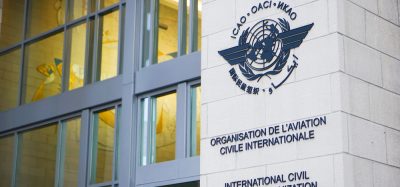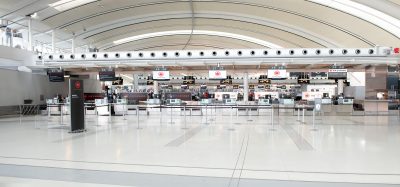Baggage at Bangalore
- Like
- Digg
- Del
- Tumblr
- VKontakte
- Buffer
- Love This
- Odnoklassniki
- Meneame
- Blogger
- Amazon
- Yahoo Mail
- Gmail
- AOL
- Newsvine
- HackerNews
- Evernote
- MySpace
- Mail.ru
- Viadeo
- Line
- Comments
- Yummly
- SMS
- Viber
- Telegram
- Subscribe
- Skype
- Facebook Messenger
- Kakao
- LiveJournal
- Yammer
- Edgar
- Fintel
- Mix
- Instapaper
- Copy Link
Posted: 8 August 2011 | Hari Marar, President of Airport Operations at Bangalore International Airport (BIAL) | No comments yet
Our goal is to establish Bangalore International Airport as India’s leading airport in terms of quality and efficiency as well as setting a benchmark for other airports in India. The facility has been built and is being operated to international standards and is now a pioneer in the country due to the passenger experience that takes place on the ground.
Situated on a 4,000 acre plot of land, the airport currently has a 4,000 metre runway and a terminal building of around 70,000 square metres, the capacity of which is soon to be doubled. The airport handles nearly 12 million passengers annually and is growing at a rate of 18 per cent higher than the national average of 16 per cent. This makes Bangalore one of the busiest greenfield airports in the country. With a passenger profile of over 50 per cent that comprises business travellers, the airport has prided itself on efficiency and processes that make air travel a pleasant and hassle free experience. This customer orientated organisation is dedicated to meeting the needs of its passengers. Being a greenfield airport allows the ability and freedom to deploy state of the art, industry leading solutions. Given the airport’s location in the home of India’s formidable IT industry, it is entirely appropriate that this world-class airport remains at the forefront of cutting edge technology while ensuring efficiency and security.
Our goal is to establish Bangalore International Airport as India’s leading airport in terms of quality and efficiency as well as setting a benchmark for other airports in India. The facility has been built and is being operated to international standards and is now a pioneer in the country due to the passenger experience that takes place on the ground.
Situated on a 4,000 acre plot of land, the airport currently has a 4,000 metre runway and a terminal building of around 70,000 square metres, the capacity of which is soon to be doubled. The airport handles nearly 12 million passengers annually and is growing at a rate of 18 per cent higher than the national average of 16 per cent. This makes Bangalore one of the busiest greenfield airports in the country. With a passenger profile of over 50 per cent that comprises business travellers, the airport has prided itself on efficiency and processes that make air travel a pleasant and hassle free experience. This customer orientated organisation is dedicated to meeting the needs of its passengers. Being a greenfield airport allows the ability and freedom to deploy state of the art, industry leading solutions. Given the airport’s location in the home of India’s formidable IT industry, it is entirely appropriate that this world-class airport remains at the forefront of cutting edge technology while ensuring efficiency and security.
The airport strives to deliver airlines and passengers a high quality experience backed by assured service levels and high reliability. The airport has deployed an efficient IT infrastructure that has multiple advantages for all stakeholders involved. We also have the first and only Airport Operations Control Centre (AOCC) for collaborative decision making. The AOCC serves as the nerve centre for the airport with real-time data being fed into it from various departments and facilitates collaborative decision making (CDM).
Checking-in
Bangalore Airport is one of India’s leading airports in terms of quality and efficiency and aims to set a benchmark for the future commercial development of other Indian airports. The airport is equipped with 53 checkin counters which faces the main entrance of the departure hall in the terminal building. The fully equipped, Common Use Terminal Equipment (CUTE) enabled counters have been designed based on the feedback of all airlines operating to and from Bangalore and are linked to a fully automated baggage handling system. The CUTE service provider at Bangalore International Airport is the French based company RESA.
Self service
The airport, in keeping with the ‘Simplify the Business’ initiative of IATA, endeavours to develop its service counters and support various alternative forms of check-in that can enhance the passenger experience. Business travellers are extremely busy people and travel comprises a major portion of their working lives. Travelling mostly with only hand baggage, time for these passengers is precious. To assist with their progress, the airport has 18 Common Use Self Service (CUSS) kiosks located in the terminal building, at the heart of the terminal’s passenger flow, from the departures entry to the check-in area. The airport recently received the IATA platinum certification for being the first 100 per cent Bar-Coded Boarding Passes (BCBP) compliant airport in India. Both the CUSS and CUTE facilities at the airport are now BCBP compliant.
Baggage Handling System (BHS) at Bangalore
Amajor concern for any passenger is being parted from their baggage. A sense of relief prevails only once the passenger has been reunited with their baggage safely. Bangalore’s BHS is designed to deliver an efficient and accurate system. Baggage is collected from each passenger in an organised manner and then delivered to the specific aircraft after security screening. The BHS at the airport is deployed by Siemens and increases operational security, cuts costs and reduces risk. The check-in counters are spread over three islands, with each counter being linked to a main baggage conveyor via weighing, labelling and other induction conveyor belts. These belts then feed the baggage onto three main conveyors which lead to separate baggage make-up carousels at the Baggage Make-Up Area (BMA). The entire BHS is automated and has in-built contingency modes to attend to failures. The BHS is remotely monitored by a SCADA (Supervisory Control and Data Acquisition) system, which ensures that the system is operational all the time.
In-line screening system
At an airport, ‘efficiency’ is often a function of simplicity and a process or flow. It is a key element of Bangalore’s operations. Simplicity of flow is achieved through reduction in the number of processes the passenger must go through before being declared ‘fit to travel’.
At the majority of Indian airports, security checks for checking-in baggage is done by a standalone x-ray machine before the passenger reaches the check-in counters. This adds to the time and processes the traveller has to undergo and also congests the terminal by creating long queues. To eliminate this process and save on time, the airport has invested in a modern and state of the art in-line security screening system.
The security screening is a five level screening system that is amongst the first in the country. Checked-in baggage of the passengers is screened through this system which is integrated into the BHS before it passes through the system to its final destination in the BMA.
Baggage Reconciliation System (BRS)
Long-term growth in passenger numbers, short turnaround times and the need to control costs and ever tighter security regulations make baggage handling more of a priority for the modern airport. It is the need of the hour for airports therefore, to make baggage reconciliation processes simpler, smarter and more assured.
The BRS is supported by the world’s most comprehensive communications network and backed by end-to-end service management, ensuring comprehensive baggage tracking and management. It leverages the power of state-ofthe- art technologies and IP based global links to get baggage safely to its destination with minimum disruption. The Airport’s BRS consists of two main modules – ‘Bag Manager’ and ‘Bag Message’. The ‘Bag Message’ application has live connections to airline DCS (Departure Control Systems) around the globe. It processes and forwards baggage status messages for online bag reconciliation activities to be carried out by the ‘Bag Manager’ application in the SITA servers at the airport. Hand held Wi-Fi enabled scanners are used at the BMA by ground handlers and self-handling airlines. This solution provides positive passenger bag match and reconciles passengers with their bags thereby conforming to ICAO’s Annex 17-security requirement, prohibiting the carriage of unaccompanied baggage onto the aircraft. Currently Bangalore has 25 airlines who are participating in the Baggage Reconciliation System (BRS). The airport offers free Wi-Fi in the terminal building that is not only welcomed by its passengers, but also benefits the airlines and other partners working at the terminals. The entire BRS in the airport is built on this wireless network.
The benefit
The key benefit of this accurate tracking and reconciliation system is the net reduction in the number of mishandled bags and therefore improvements in customer satisfaction. The airport has deployed a highly effective yet easy to use baggage tracing system providing continuous tracing for up to 100 days. The BRS is used by the airport’s ground handlers to track, monitor and match the baggage to the passenger on board, so that no unaccompanied baggage is on the aircraft. This helps, for example, when say a passenger has checked their baggage in, but have not yet boarded a flight.The baggage is tracked immediately and offloaded, ensuring that the passenger and their baggage are never separated.
The target
The three critical elements in maintaining baggage delivery standards are; people, processes and systems. The prompt delivery of arriving passengers’ baggage is an important part of a hassle free travel experience. The goal has to be to provide high standards of efficiency in this area on a consistent basis. Whilst a passenger may reach the baggage carousel faster due to the shorter walkways, a long wait for baggage can be very frustrating. Usually, arriving passengers take about seven to ten minutes to reach the baggage claim area at Bangalore, it has been concluded that the ideal time for baggage delivery of the first bag should be approximately seven minutes, in order to ensure that bags are available on the belt before arrival of the passengers.
The infrastructure
A total of seven baggage carousels have been installed at Bangalore, three for domestic and two for international arrivals. Furthermore, there are two carousels located in the ‘swing area’ which can be used for both domestic or international use depending on the peak hour requirement. This enables flexibility and maximises the utilisation of available infrastructure. At Bangalore, the international arrival baggage is screened by customs. They carry out screening of arrival bags as per the required guidelines, which incorporates the custody examination, assessment of duty and the eventual clearance of baggage.
Working towards a common goal
The processes at an airport are performed by various organisations and agencies, each having different procedures, objectives and goals. The lack of uniform procedures and a common goal leads to inconsistent service delivery. This is where Bangalore is unique. Here, objectives and the procedures to achieve targets are evolved collaboratively and are designed with the consideration of all stakeholders involved. This leads to roles being clearly defined and allows personnel from various organisations to work within harmonisation.
Infrastructure
Infrastructure design has a major impact on baggage delivery time. Bangalore pays particular attention to the design of the vehicular and baggage flows in various areas such as the BMA and BBA (Baggage Breakup Area) to ensure minimal bottle-necks and alleviate stagnated or reduced flow rates. We have calculated a certain maximum time for traversing the distances between aircraft stands and the BBA. This is used as a key indicator when designing passenger flows.
Stakeholders
All stakeholders involved in the process such as the airlines, airport operators and regulatory agencies collectively set baggage delivery targets. These targets are then filtered down the operative line, so that everyone has a common understanding and is collectively responsible for this key performance goal.
Real time
To enhance real time situational awareness the exchange of information in a seamless manner is essential. BIAL therefore provides a common platform (Airport operational database) which enables all stakeholders to engage in an optimum utilisation of resources and the achievement of the delivery targets. The Trunk Mobile Radio system (TMRS) provides a high quality communication platform to assist with this.
Training
Training is conducted and lead by the airport operator for all of its stakeholders in order to ensure the singularity of vision. This training helps to achieve better understanding of each agency’s roles and what needs to be measured and managed effectively. Therefore, all processes at BIAL are monitored. These measurements indicate the status of operations at various zones of the airport. They are continually analysed and shared with the involved stakeholders, who in-turn use them to improve their performance by way of advanced training. The delivery times of the first and last bags of each flight are measured every single day using the ‘first bag – last bag’ application from airport solutions firm UFIS.
Setting high standards
The objectives of baggage handling, safety, security, efficiency and reliability are met at Bangalore through intelligent deployment of technology, stakeholder collaboration, clearly defined processes and most importantly a committed work force.
Over the last three years, the airport has achieved a ‘zero bag’ loss count and a consistently high standard of baggage delivery for both domestic and international bags.
As part of its philosophy of continuous improvement, employees are retrained several times and technology is upgraded so as to remain on top of the game.
About the Author
As the president of Airport Operations, Hari Marar is responsible for the entire airport operations, engineering, maintenance and commercial functions of Bangalore International Airport. Joining BIAL in September 2006 as the Head of Daily Operations, Hari moved on to become the Chief Operation Officer. As a member of the core team that successfully incorporated the airport project, he was instrumental in defining the operational concept of the airport and in building up the team to ensure its readiness for functioning. Hari brings with him a wealth of experience from over 15 years spent in service industries that include hospitality, airlines and airports across Delhi, Chennai and Bangalore.
















